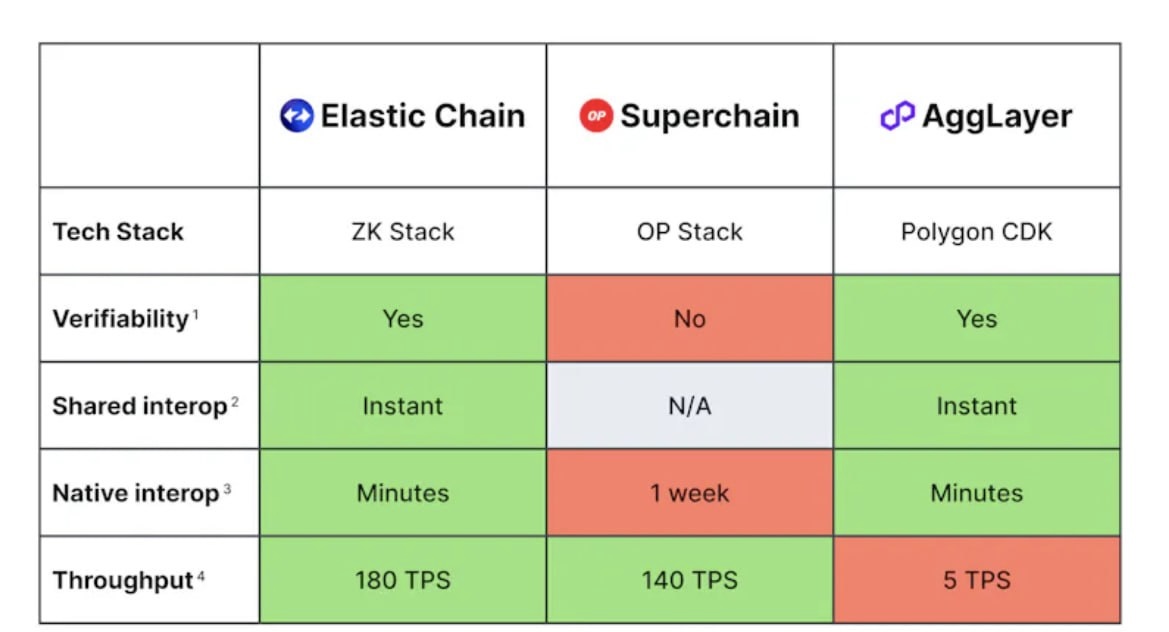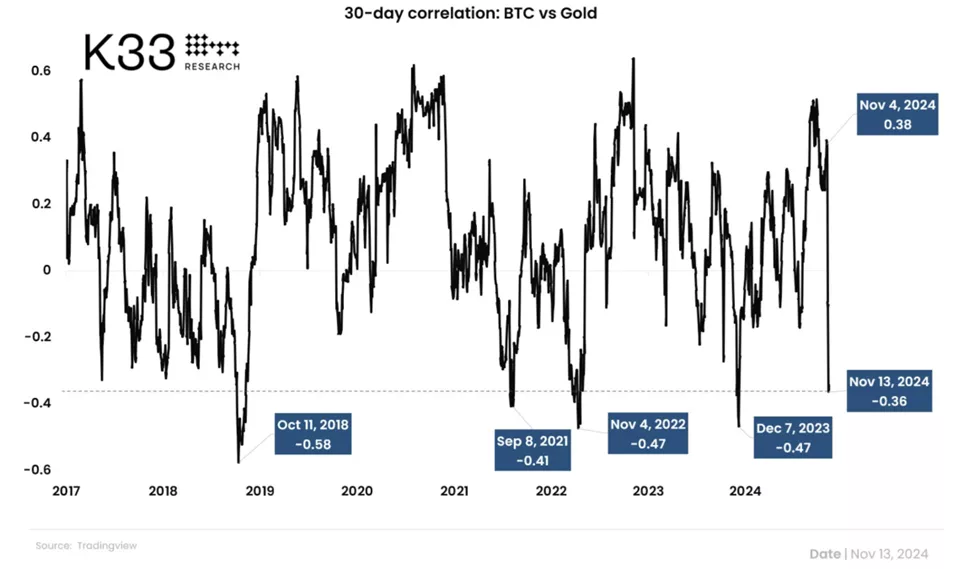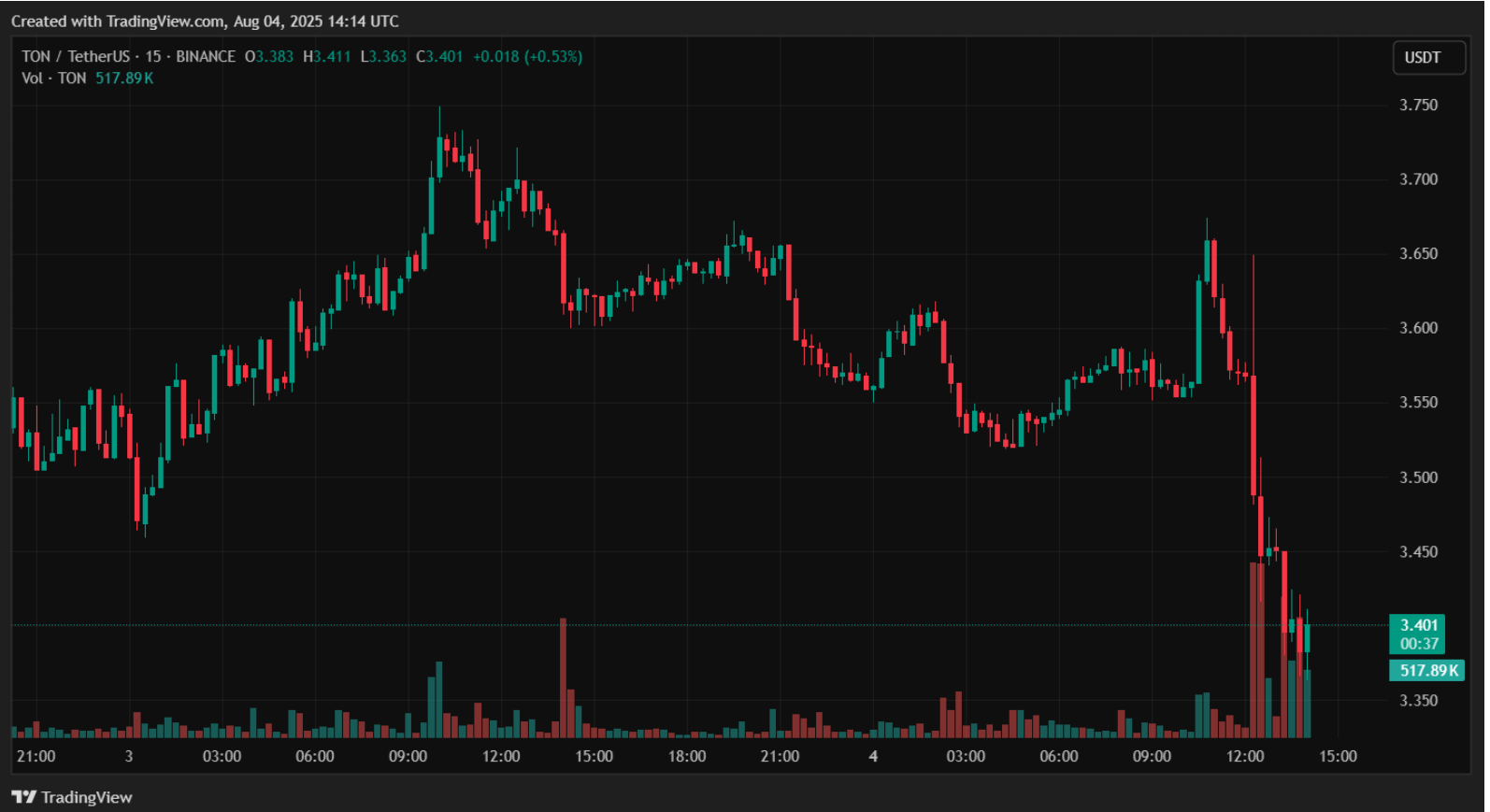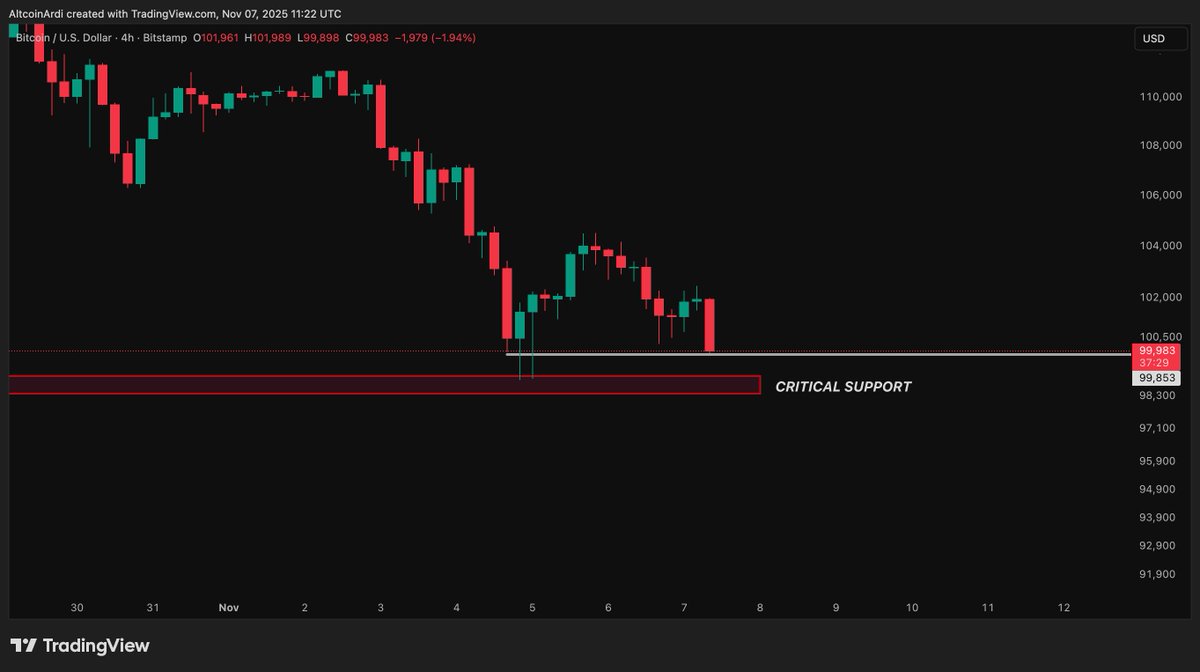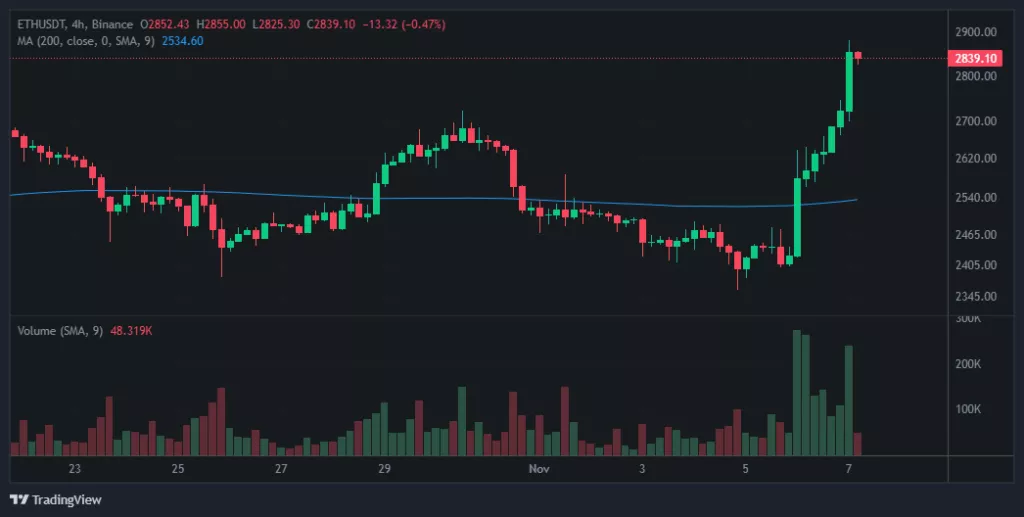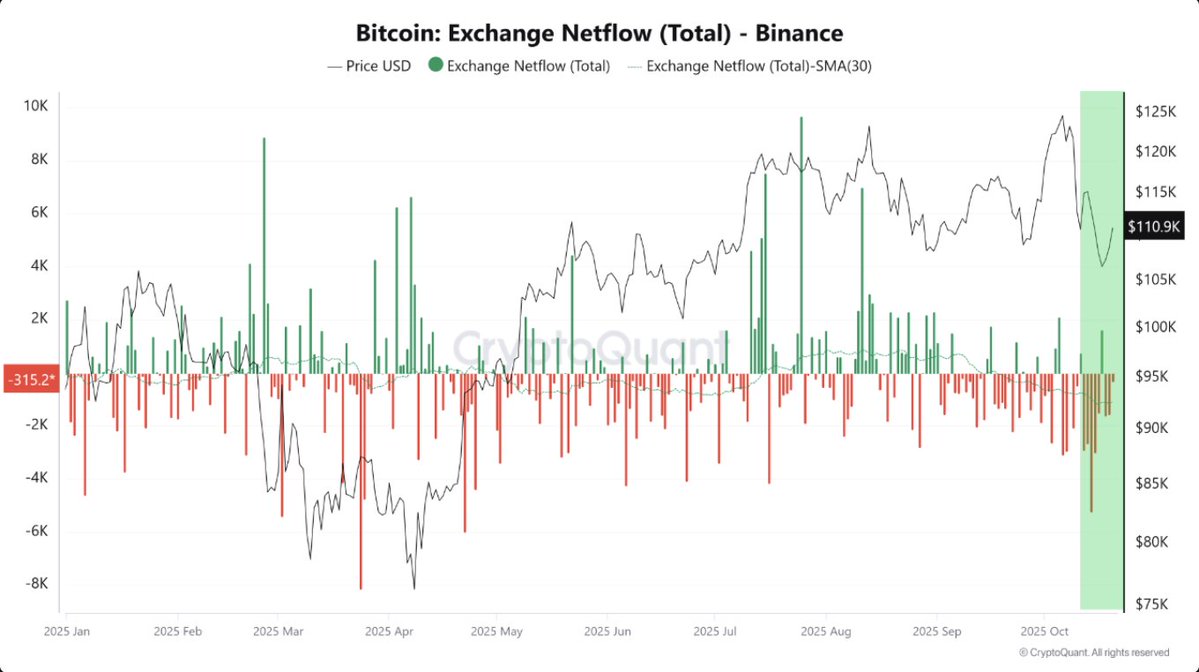Since 2021, cross-chain bridge hacks have resulted in losses exceeding $2 billion, including $611 million on Poly Network, $624 million on Ronin Network, and $586 million on BNB Bridge.
To address this issue and enhance the security of cross-chain transfers, ZKsync has introduced Elastic Chain, an equivalent to Optimism’s SuperChain and Polygon’s AggLayer.
Elastic Chain will unify all L2 networks built on ZKsync into a single ecosystem, allowing users to utilize one address for all transactions and pay fees with any tokens.
If you are familiar with the Cosmos ecosystem, understanding this will be easier for you.
Elastic Chain also ensures security through cryptographic verification by Ethereum, eliminating the need for third-party bridges. The ZKsync network ecosystem can scale without increasing transaction costs, supporting high throughput.
In a transaction speed test, ZKsync outperformed its competitors: ZKsync Era achieved 181.8 TPS, Polygon zkEVM showed 5.4 TPS, and Optimism reached 142.8 TPS.
However, these are plans for the future. Currently, networks based on ZKsync, Polygon, and Optimism operate in isolation and require standard bridges.
In the future, these networks are planned to be integrated into a single ecosystem, allowing users to simply use applications without worrying about which network they are on or which cryptocurrency to use for fees.
By the end of 2024, more than 20 L2 networks will be launched on ZKsync, including Lens, Sophon, ZERO (by Zerion), Cronos, Nodle, GRVT, and many others — all of which will be unified into a single ecosystem through Elastic Chain.
